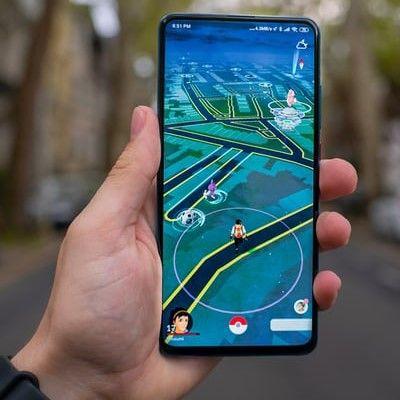What Is the Future of Augmented Reality?
Augmented reality, or AR, refers to technology that inserts digital objects into the real world. A kind of bridge between virtual reality (VR) and the real world. AR has been an exciting factor in the tech industry for several years now, with products such as Google Glass, Magic Leap, and Microsoft Hololens launching to varying success, as well as a host of augmented reality apps for mobile devices, including the global phenomenon that was Pokémon Go.
Written by Luis Paradela|Posted on March 15, 2022

Augmented reality, or AR, refers to technology that inserts digital objects into the real world. A kind of bridge between virtual reality (VR) and the real world. AR has been an exciting factor in the tech industry for several years now, with products such as Google Glass, Magic Leap, and Microsoft Hololens launching to varying success, as well as a host of augmented reality apps for mobile devices, including the global phenomenon that was Pokémon Go.
As an emerging technology, augmented reality has so far made gradual inroads into niche use cases such as mobile gaming and engineering, but recent developments in the tech industry could see AR being adopted by the mainstream, as various related technologies converge in the proposed ‘Web 3.0’.
Difference between Augmented Reality and Virtual Reality
Virtual reality is a totally immersive technology in which the user, through a headset and handheld controller, is completely inside a digital environment. So, essentially, the entire world that the user sees is artificial and is created by the real-time rendering of 3D models, like in a typical game. Augmented reality superimposes digital items (including 3D models, 2D pictures, and texts) over the real world, allowing for both physical and real objects to be seen and interacted with, as well as to enhance real objects with digital graphics. Rather than necessarily being mutually exclusive, AR and VR can be seen as points along a spectrum. Future platforms could use VR on their highest level of immersion, with AR options for users who wish to interact with the real world. An experienced VR development company will be adept and developing solutions across this spectrum.
AR in Industry
There are many industries that benefit from the visual and spatial representation that augmented reality can provide, as it offers the opportunity for practical, hands-on experimentation without the need for physical objects.
Industries with expanding augmented reality technologies include:
- Engineering (designing machinery with AR objects)
- The automotive industry (design, testing, and customization in virtual environments, as well as AR enhancements for driver information)
- Education (for visual and interactive learning in all subjects)
- Property/real estate (virtual tours and building designs)
- Interior design and furnishings (to experiment with furniture placement and colors)
- Fashion and beauty (trying out AR looks and makeup)
- Healthcare (training with AR representations of the body)
- Retail (for product demonstrations)
- Tourism (graphical tour information and previews)
- Gaming (mainly via smartphone games)
Almost any industry in which showing a user something is preferable to using blank text or a bland, flat, 2D image, can benefit from AR.
AR and the Metaverse
The metaverse refers to the digital space that would combine gaming, e-commerce, social media, and business apps in a shared graphical world that users will interact with via their senses and body movements. Once the preserve of fiction, now the metaverse has Meta’s (formerly Facebook) powerful social media, big data, and VR resources pushing the concept.
Discrete metaverse environments already exist (e.g. Decentraland, VRchat, and Somnium Space), with newer ones still emerging. The main challenge for metaverse technology is interoperability and user friction. Most people would prefer not to commit to full VR immersion to participate. AR solutions will make the metaverse more accessible for the majority, and so may well be the real future of the metaverse.
The main benefit of AR vs VR for Metaverse implementation is that, with AR, the user never loses contact with the real world, which allows for longer experience times. Since VR has limitations, like people looking for a reference to the real world, the VR experience may be uncomfortable after long periods of time; for example, when playing a VR game. With AR, since the user has a connection with the real world during the entire experience, comfort is not an issue.
AR and Blockchain
Blockchain, cryptocurrencies, and non-fungible tokens (NFTs) also have the potential to boost AR technology, especially in the case of NFTs. As the metaverse evolves and more and more people interact with digital items, the uniqueness and value of these items can be validated using NFTs. Rather than being a simple link to a 2D image or video, NFTs could verify AR objects that users can move, display, and use in virtual and real space.
Developers who are proficient in both blockchain and AR technologies can offer software solutions that combine the benefits of both, to design both virtual objects as well as the verification software and crypto economy to support them.
Developing Software AR Solutions for Your Business
Depending on your needs, integrating AR technology into your business has great potential for both internal and customer-facing use cases. From training to advertising to gamification or product interactivity, AR can enhance many elements of a project. AR development is complex, and the expertise of developers can make all the difference in whether AR appears as a true enhancement or a gimmick.
At Accelone, we help businesses across a variety of industries integrate AR into their products and processes in ways that complement their goals. Our nearshore and onshore software development company includes a team of experienced augmented reality and virtual reality developers that have a proven track record of creating expertly designed virtual experiences and augmentations using high-quality 3D models and responsive interactions. To discuss how we can assist your business upgrade using AR, contact us online or call us at (800) 863-6814.

Luis Paradela
Chief Development Officer
Co-Founder
Buenos Aires
View profile